Please note that room locations and schedules are subject to change and all details should be confirmed before the start of the class.
Fall 2023
ARTH 202 (CRN 1320)
Introduction to Contemporary Art (3 credits)
Prof. Chanon Kenji Praepipatmongkol
Mondays and Wednesdays, 2:35 pm-3:55 pm
ARTS W-215
A critical survey of contemporary art and theory, from 1945 to the present focusing on pivotal issues such as anti-war politics, feminism, sexual diversity, AIDS awareness, discourse of multiculturalism, debates about modernism and postmodernism, post colonialism, technology, and globalization.
ARTH 207 (CRN 1321)
Introduction Early Modern Art 1400-1700 (3 credits)
Prof. Chriscinda Henry
Tuesdays and Thursdays, 10:05 am-11:25 am
ARTS W-215
By the end of the 16th century, Africa, Asia, and Europe were connected to North and South America via a vast network of complex trade routes. This course tracks the dynamic forms of material and cultural exchange that accompanied this vast expansion of connectivity and increase in shared knowledge across the late medieval early modern periods. Art and other objects of material and visual culture played a crucial role in the migration of images, ideas, beliefs, and power structures across geographic boundaries. This introductory lecture course explores human mobility and the circulation of artistic materials, objects, styles, and techniques between Africa, Asia, Europe, and Latin America, 1300 to 1600. While this period was marked by increasingly complex interactions between world societies driven by scientific curiosity, diplomacy, trade, and voyages of exploration, it also witnessed the advent of Transatlantic slavery, the spread of contagious disease, and the conquest, forced religious conversion, colonization, and exploitation of multiple indigenous populations. This course presents a selective survey of the art and visual culture that embody these interconnected dynamics and express ambivalent historical realities across a wide variety of media from maps, illustrated manuscripts, and prints to textiles, ceramics, murals, stone sculpture, metalwork, and architecture.
ARTH 225 (CRN 1322)
Introduction to Seventeenth-Century Art (3 credits)
Bodies and Power in and beyond Western Europe
Prof. Angela Vanhaelen
Wednesdays and Fridays, 1:05 pm-2:25 pm
ARTS W-215
Visual imagery was mobilized in inventive and forceful ways in the seventeenth century. This course will critically examine the functions and uses of a wide range of visual and material culture in relation to the European and global expansion of absolutism, capitalism, urbanism, colonialism, diplomacy, slavery, missionary activity, and religious strife. Artistic and architectural production will be considered in relation to the body, especially historical understandings of gender & sexuality, race & racism, disability, labour, authority, and social status.
Note: Not to be taken if you've done ARTH 207 with Prof. Vanhaelen.
ARTH 302 (CRN 1323)
Aspects of Canadian Art (3 credits)
Indigenous and Settler Photography in Canada
Prof. Reilley Bishop-Stall
Mondays and Wednesdays, 4:05 pm-5:25 pm
ARTS W-215
This course will examine Indigenous and settler photography in Canada (and, to some extent, the United States) from settlement and confederation to the present moment. Photography has played a distinct and integral role in North American settler colonialism, functioning equally as a weapon of dispossession, misrepresentation, and control, and as a tool of empowerment, exposure and self-determination for Indigenous artists and activists. Through a series of thematic lectures, this class will investigate the importance of photography to the formation of Canadian national identity, to the fields of anthropology, ethnography and fine art, and to colonial policies of assimilation, erasure and containment targeting Indigenous people. Engaging with the foundational characteristics of the medium and its longstanding association with exposing, obscuring or aestheticizing violence and atrocity, specific emphasis will be paid to the use of photography in the promotion and documentation of the Indian Residential School system, in the production and dissemination of racialized stereotypes, in conflict reporting in the news and on social media, and in the purported pursuit of “truth and reconciliation.” Since the camera’s invention, Indigenous people have proven popular subjects for European and settler photographers, but have had equally as long a history behind the camera. There is a rich tradition of Indigenous artists confronting and questioning the hegemony of settler photography in challenging, revelatory and anticolonial ways. Engaging closely with both historical archives and the work of contemporary artists, students will be asked to critically analyze both familiar and lesser-known images within the context of settler colonial Canada.
ARTH 323 (CRN 1324)
Realism and Impressionism (3 credits)
Prof. Mary Hunter
Tuesdays and Thursdays, 2:35 pm-3:55 pm
ARTS W-215
The course is an investigation into Realism and Impressionism, the principal artistic movements between ca. 1840 - 1880.
ARTH 360 (CRN 1325)
Studies in the Photographic (3 credits)
Building with Light: The entangled histories of Photography and Architecture
Dr. Evgeniya Makarova
Wednesdays and Fridays, 10:05 am-11:25 am
ARTS W-215
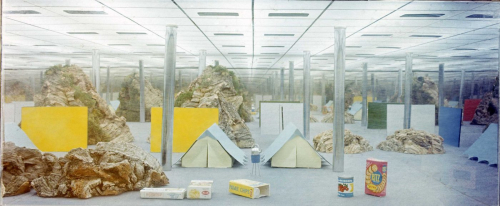 Influential architectural photographer Eric de Maré famously described photography as ‘building with light,’ emphasizing its visual and conceptual kinship with architecture. Drawing from this poetic analogy, the present course explores the entanglement of the two media, beginning with the inception of photography in the nineteenth century, progressing through its aesthetic permutations during the consecutive eras of Historicism and Modernism, then its integration of Postmodernist complexities and contradictions, and culminating with its digital metamorphosis in the Post-Internet age. We will discuss how photography (1) influences our ideas about buildings and cities; (2) shapes architectural and urban design practices; (3) articulates the relationship between public and private spheres, man-made and natural environments, as well as the individuals and social groups that inhabit them; (4) translates the tectonic language of space, mass, and structure into a visual form; and (5) adapts it to a variety of uses – commercial, political, scholarly, archival, artistic, sentimental, etc.. Special attention will be given to architectural photography as a means of critical commentary on such pressing issues as poverty, social inequality, military conflict, accessibility, gentrification, historic preservation, and climate change.
Influential architectural photographer Eric de Maré famously described photography as ‘building with light,’ emphasizing its visual and conceptual kinship with architecture. Drawing from this poetic analogy, the present course explores the entanglement of the two media, beginning with the inception of photography in the nineteenth century, progressing through its aesthetic permutations during the consecutive eras of Historicism and Modernism, then its integration of Postmodernist complexities and contradictions, and culminating with its digital metamorphosis in the Post-Internet age. We will discuss how photography (1) influences our ideas about buildings and cities; (2) shapes architectural and urban design practices; (3) articulates the relationship between public and private spheres, man-made and natural environments, as well as the individuals and social groups that inhabit them; (4) translates the tectonic language of space, mass, and structure into a visual form; and (5) adapts it to a variety of uses – commercial, political, scholarly, archival, artistic, sentimental, etc.. Special attention will be given to architectural photography as a means of critical commentary on such pressing issues as poverty, social inequality, military conflict, accessibility, gentrification, historic preservation, and climate change. ARTH 400 (CRN 1326)
Selected Methods in Art History (3 credits)
Prof. Matthew C. Hunter
Thursdays, 11:35 am-2:25 pm
FERR 230
This seminar is designed to accompany and support the writing of the honours thesis in art history (ARTH 401); enrollment is limited to students formally enrolled in the art history honours program. The assignments are meant to help you deliver a “capstone” project and to prepare for advanced study in art history. Thus, we will consider techniques of art-historical knowledge production, along with varieties of evidence the discipline has traditionally privileged and excluded. Examining topics of current urgency facing the discipline, the course foregrounds practical activities key to advanced art-historical study: grant writing, concise presentation of research, and critical evaluation of sources, among others.
Note: This seminar is limited to students formally accepted in the honours AH program.
ARTH 401 (CRN 1327)
Honours Research Paper (3 credits)
An Honours research paper written in consultation with an academic advisor.
Note: This Research Paper is limited to students formally accepted in the honours AH program.
ARTH 411 (CRN 1328)
Canadian Art and Race (3 credits)
Land, Identity and Nationhood
Prof. Reilley Bishop-Stall
Fridays, 11:35 am-2:25 pm
ARTS W-5
This course examines race, colonialism, identity and nationalism in Canadian art, by focusing on the centrality of land and landscape to Canadian art history, political theory and practice, national identity and narrativization. Canada is a settler colonial nation, with a diverse and changing population, occupying Indigenous land and contested territories. The history, economy and national identity of Canada has, since its origins, largely been determined by the (colonized and expropriated) land upon which the country was formed. As such, art production in and about Canada has consistently figured the land as a vital element or actor. Throughout Canadian art history, the land has been represented as a bountiful resource, sublime environment, impenetrable wilderness, conflict zone, and kin, depending on the political moment and positionality of the artist. This discussion-based seminar will be a collaborative endeavour where we, as a group, approach these topics from a variety of perspectives, reading complex texts from numerous disciplines and linking these to themes and topics in Canadian art.
ARTH 422 (CRN 1329)
Selected Topics in Art and Architecture 3 (3 credits)
Materiality and the Senses in Medieval and Early Modern European Art
Prof. Chriscinda Henry
Wednesdays, 11:35 am-2:25 pm
FERR 422
This seminar seeks to collapse methodologies used for study of so-called fine or high arts (painting, sculpture, architecture, printmaking), the so-called decorative or luxury arts (furniture, textiles, ceramics, metalware, glassware), and performative work (banquets,triumphs) through a visual culture and object-based approach that enlists the speculative reconstruction of sensory experience. We will read important recent work on the cultural history of the senses and the somatic experience of art, while also engaging with the theoretical literature on the “power of images” and the agency of things, including the important concept of “vibrant matter.” Overall, we will address the role of sensation and experience in thought and practice in relation to the materiality and use value of objects from around 1200 to 1600, primarily in western Europe, although paper topics on transcultural objects and objects from non-European contexts are welcome. We will also pose questions about historical experience. For example, how did artists make touch, sound, and scent palpable to the minds and bodies of their audiences and to what ends? A key course component will be a group visit to the Montreal Museum of Fine Arts.
ARTH 435 (CRN 1330)
Early Modern Visual Culture (3 credits)
Art and Injustice in the 17th-century Dutch Republic and its Global Trading Empire
Prof. Angela Vanhaelen
Tuesdays, 2:35 pm-5:25 pm
FERR 230
ARTH 490 (CRN 1332)
Museum Internship (3 credits)
The Museum Internship is intended to provide direct exposure to museum collections and practical experience in the museum setting for students interested in museum professions. Individually designed in consultation with the professor in charge of internships and the appropriate personnel at one of the Montreal museums.
Note: Department approval required.
ARTH 501 (CRN 1333)
Advanced Topics in Art History and Visual Culture (3 credits)
Prof. Jeehee Hong
Tuesdays, 11:35 am-2:25 pm
ARTS 385
The era of the pandemic has exposed our obsession and frustration with the face. The face has always occupied the center of social engagement, virtual and real, constantly re-inscribing the negotiation between the self and that self’s image. While we live in a culture where the authenticity and expressiveness of the face—real and represented alike—is generally celebrated, not all cultures share (or have shared) the currency of the ideal faciality. How might we understand different forms of such negotiation in the culture where representation of explicit emotional expressions — the faces that smile, frown, or cry — is largely shunned? What could the very negotiation tell us about social, cultural, religious, or political milieu of that society? This seminar draws on historical and conceptual dimensions of how such “making” of faces was interwoven with the lives of the people in premodern China, beyond its seeming role as a simple sign of their inner, emotional interests. Underlying such interests were certain attitudes toward defining, making, and remaking of boundaries that derived from the shifting landscape of social classes, religious beliefs, as well as of image making itself. Focusing on linkages between the represented facial expressions and senses of boundary making, the seminar explores a set of often contrasting subjects through distinctive modes of representation. Each mode reveals particular practices of seeing revolving around various sites of social and religious encounters, ranging from spaces of commemoration or worship (such as monastery or tombs), through street corners (shared by commoners and literati alike, or selectively shared with women and foreigners), to the expanded world (shared by humans and animals).
Note: Cross-listed with EAST 503.
![]() ARTH 501/EAST 503 Course Outline
ARTH 501/EAST 503 Course Outline
Winter 2024
ARTH 204 (CRN 1191)
Introduction to Medieval Art and Architecture (3 credits)
Prof. Cecily Hilsdale
Mondays and Wednesdays, 1:05 pm-2:25 pm
ARTS W-215
This course offers an introduction to the diverse visual cultures of the medieval Mediterranean world from the fourth to the fifteenth century. It surveys a wide range of Late Antique, Byzantine, Islamic, and European works of art and architecture, positioning them within their original social, political, and spiritual contexts and also tracing the ways in which these monuments were defined and perceived over time.
ARTH 305 (CRN 1194)
Methods in Art History (3 credits)
Lindsay Corbett
Wednesdays and Fridays, 8:35 am-9:55 am
ARTS W-215
This course will be taught around two principal questions: 1) What is art history? 2) How do we practice art history? The first question will be examined through historiography. Students will be introduced to key voices that have shaped the discipline and its institutions. We will also discuss how this dominant discourse has excluded and marginalized certain voices, thinking critically about possible avenues for reconfiguring the discipline in the future. The second portion of the class will then examine how we do art history. Centered on a series of critical case studies, students will learn how to put art historical methods into practice. These case studies will cover a variety of media from antiquity to today, providing students with a practical introduction to different ways to approach different types of material culture.
ARTH 315 (CRN 1195)
Indigenous Art and Culture (3 credits)
Prof. Gloria Bell
Mondays and Wednesdays, 2:35 pm-3:55 pm
ARTS W-215
An examination of the work of selected First Nations, Métis and Inuit artists in Canada.
Note: Cross-listed with CANS 315.
ARTH 321 (CRN 1196)
Visual Culture of the Dutch Republic (3 credits)
Prof. Angela Vanhaelen
Tuesdays and Thursdays, 2:35 pm-3:55 pm
ARTS W-215
As Svetlana Alpers wrote in her provocative book, The Art of Describing: “In Holland the visual culture was central to the life of the society. One might say that the eye was a central means of self-representation and visual experience a central mode of self-consciousness. If the theatre was the arena in which the England of Elizabeth most fully represented itself to itself, images played that role for the Dutch.” In this course, we explore how the 17th-century Dutch Republic represented itself to itself through the examination of a wide range of visual imagery, from Rembrandt and Vermeer to various forms of popular culture. Our focus will be on the central role played by visual culture in an early capitalist republic whose sudden rise to wealth and power was fueled by overseas trade, colonization, and the brutal exploitation of people and land, including the transatlantic slave trade. The functions of art will be examined in relation to key symbolic sites such as the home, the marketplace, the brothel, the town hall, the anatomy theatre, the gallows field, the curiosity cabinet, the church, the synagogue, the rural countryside, and the colonies. Our exploration of Dutch visual culture as a central mode of self-consciousness will thus open into a broader understanding of early global capitalism, republican politics, gender and sexuality, religious conflicts, medical and scientific developments, and colonial and racist violence.
ARTH 339 (CRN 1197)
Critical Issues - Contemporary Art (3 credits)
Losing Faith? Contemporary Art and the Search for Meaning
Prof. Chanon Kenji Praepipatmongkol
Mondays and Wednesdays, 11:35 am-12:55 pm
ARTS W-215
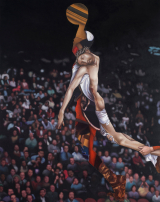 Contemporary art, so the story usually goes, follows from a loss of faith in past traditions and universalisms. And yet, the alliance between art and faith has arguably never been stronger: whether in the promise of art as spiritual consolation and therapeutic self-help, the confidence in art as vehicle of moral clarity and social justice, or the significance of art to religious nationalist and fundamentalist movements. This course will explore contemporary art by taking seriously the matter of faith as inseparable from the aesthetic. Case studies will cover a wide range of attitudes attached to a range of makers, audiences, and traditions, including Black liberation theology, socially engaged Buddhism, and Islamic feminism. The course will also investigate secular forms of belief, including neuroscientific approaches to art and well-being, and the mysticisms that fuel market speculation of blue-chip art and, most recently, NFTs.
Contemporary art, so the story usually goes, follows from a loss of faith in past traditions and universalisms. And yet, the alliance between art and faith has arguably never been stronger: whether in the promise of art as spiritual consolation and therapeutic self-help, the confidence in art as vehicle of moral clarity and social justice, or the significance of art to religious nationalist and fundamentalist movements. This course will explore contemporary art by taking seriously the matter of faith as inseparable from the aesthetic. Case studies will cover a wide range of attitudes attached to a range of makers, audiences, and traditions, including Black liberation theology, socially engaged Buddhism, and Islamic feminism. The course will also investigate secular forms of belief, including neuroscientific approaches to art and well-being, and the mysticisms that fuel market speculation of blue-chip art and, most recently, NFTs.
ARTH 353 (CRN 1198)
Selected Topics in Art History 1 (3 credits)
Totalitarian Art
Dr. Evgeniya Makarova
Mondays and Wednesdays, 4:05 pm-5:25 pm
ARTS W-215
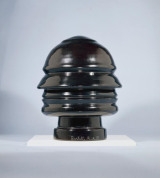 Visual arts played a pivotal role in the ascent and perpetuation of major twentieth-century totalitarian regimes: National Socialism, Fascism, and Stalinism. Their leaders harnessed the expressive potential of painting, sculpture, architecture, design, photography, and film for mythmaking and indoctrination. In this course, we will scrutinize the creative output of these highly centralized societies to better understand the dynamics of compliance and resistance, the interplay of fascination and terror among the populace, and the tension between modernism and reaction within their respective ideologies. Additionally, we will assess how Germany, Italy, and Russia grapple with their complex historical legacies today.
Visual arts played a pivotal role in the ascent and perpetuation of major twentieth-century totalitarian regimes: National Socialism, Fascism, and Stalinism. Their leaders harnessed the expressive potential of painting, sculpture, architecture, design, photography, and film for mythmaking and indoctrination. In this course, we will scrutinize the creative output of these highly centralized societies to better understand the dynamics of compliance and resistance, the interplay of fascination and terror among the populace, and the tension between modernism and reaction within their respective ideologies. Additionally, we will assess how Germany, Italy, and Russia grapple with their complex historical legacies today.
ARTH 368 (CRN 1199)
Studies in Northern Renaissance Art 1 (3 credits)
Prof. Chriscinda Henry
Tuesdays and Thursdays, 1:05 pm-2:25 pm
ARTS W-215
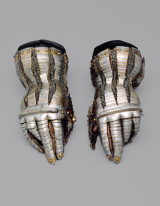 This thematic survey of Northern European art explores the development of painting, sculpture, printmaking, and the luxury arts in the Netherlands, France, Germany, and England from about 1350 to 1600. Through historical and visual interpretation, we will consider the social, political, and religious functions of artworks in public and private life, exploring the needs and interests of various patrons, artists, and beholders. Topics to be addressed include the multiple forms of art produced for religious devotion; the significance of artistic materials and techniques including the revolution of the print medium; the changing conception of the artist over time; the role of gender and class in art making and viewing; the explosion of secular imagery in art; expanding geographies and transcultural encounters including colonialism; and the dramatic cultural transformation brought about by Renaissance humanism, the Protestant Reformation, and the entanglements of Northern and Central Europeans in Africa and the Americas. The course will include independent work on objects in the Montreal Museum of Fine Arts or Rare Books and Special Collections at the McGill Library.
This thematic survey of Northern European art explores the development of painting, sculpture, printmaking, and the luxury arts in the Netherlands, France, Germany, and England from about 1350 to 1600. Through historical and visual interpretation, we will consider the social, political, and religious functions of artworks in public and private life, exploring the needs and interests of various patrons, artists, and beholders. Topics to be addressed include the multiple forms of art produced for religious devotion; the significance of artistic materials and techniques including the revolution of the print medium; the changing conception of the artist over time; the role of gender and class in art making and viewing; the explosion of secular imagery in art; expanding geographies and transcultural encounters including colonialism; and the dramatic cultural transformation brought about by Renaissance humanism, the Protestant Reformation, and the entanglements of Northern and Central Europeans in Africa and the Americas. The course will include independent work on objects in the Montreal Museum of Fine Arts or Rare Books and Special Collections at the McGill Library.
ARTH 420 (CRN 1200)
Selected Topics in Art and Architecture 1 (3 credits)
Textiles of the Late Antique and Medieval Mediterranean
Prof. Cecily Hilsdale
Mondays, 2:35 pm-5:25 pm
ARTS W-220
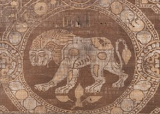 Silk was the diplomatic gift par excellence in the medieval Mediterranean. It offered the maximum advantage for long-distance diplomacy: easily transported, lightweight and flexible, silk bore the highest economic value, sometimes equivalent to specie. Its circulation was heavily regulated, with harsh punishments for silk workers who strayed beyond the prescribed confines of guild systems. Beyond economics and diplomacy, silk and other sumptuous textiles fundamentally index the body as adornment and punctuation for its spatial environments. Silk garments proclaimed status for their wearers, offering a finely calibrated visual coding for court cultures; they also were used to wrap the most sacred bodies in churches, both as funerary dress for entombed bishops and as the lining of reliquaries for the relics of saints. Fabric hangings offered the possibility of portable monumentality and flexible architecture, serving as adornment for altars or means to divide church space, or as tents for rulers on battlefields or brides in transit to new lands.
Silk was the diplomatic gift par excellence in the medieval Mediterranean. It offered the maximum advantage for long-distance diplomacy: easily transported, lightweight and flexible, silk bore the highest economic value, sometimes equivalent to specie. Its circulation was heavily regulated, with harsh punishments for silk workers who strayed beyond the prescribed confines of guild systems. Beyond economics and diplomacy, silk and other sumptuous textiles fundamentally index the body as adornment and punctuation for its spatial environments. Silk garments proclaimed status for their wearers, offering a finely calibrated visual coding for court cultures; they also were used to wrap the most sacred bodies in churches, both as funerary dress for entombed bishops and as the lining of reliquaries for the relics of saints. Fabric hangings offered the possibility of portable monumentality and flexible architecture, serving as adornment for altars or means to divide church space, or as tents for rulers on battlefields or brides in transit to new lands.
While the assigned readings for this seminar will cover a capacious set of questions relating to the study of textiles, a special emphasis will be placed on the world of Late Antique Egypt and final research papers will be anchored by particular Coptic textiles in the Montreal Museum of Fine Arts.
This intensive upper-level seminar is intended for students with a strong foundation in Art History preferably with a background in medieval or early modern art and visual culture. While a background in medieval textiles is not required for the seminar, an openness to original and in-depth research is necessary.
ARTH 421 (CRN 1201)
Selected Topics in Art and Architecture 2 (3 credits)
Prof. Gloria Bell
Tuesdays, 2:35 pm-5:25 pm
ARTS W-220
Selected topics in art and architecture. Topics vary by year.
ARTH 440 (CRN 7211)
The Body and Visual Culture (3 credits)
Bodies & Buildings
Dr. Evgeniya Makarova
Fridays, 11:35 am-2:25 pm
ARTS 350
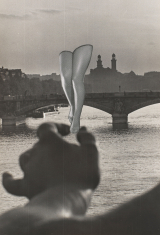 This course delves into the dynamic relationship between architecture and corporeality across history and into the present. It explores how buildings both reflect and influence our conceptions of the human body, considering its physical dimensions, sensory experiences, movement, behavior, health, and well-being. The course further examines how urban and architectural design choices frame human encounters and interpersonal relations, promote or impede collective agency, diversity and inclusivity. In addition to theoretical texts and scholarly articles, we will investigate the connection between bodies and buildings through art, photography, and film.
This course delves into the dynamic relationship between architecture and corporeality across history and into the present. It explores how buildings both reflect and influence our conceptions of the human body, considering its physical dimensions, sensory experiences, movement, behavior, health, and well-being. The course further examines how urban and architectural design choices frame human encounters and interpersonal relations, promote or impede collective agency, diversity and inclusivity. In addition to theoretical texts and scholarly articles, we will investigate the connection between bodies and buildings through art, photography, and film.
ARTH 501 (CRN 7469)
Advanced Topics in Art and Visual Culture
Art, Activism and the Aesthetics of Resistance
Prof. Reilley Bishop-Stall
Thursdays, 2:35 am-5:25 pm
ARTS W-220
This course will examine the longstanding relationship between art, activism, aesthetics and resistance. Art and activism have long been intertwined and the introduction of the Internet and the rise of social media have radically altered activism and, by extension, activist art. This course will investigate the impact of changing technologies and social structures on protest movements, community mobilization, and social justice campaigns by looking specifically at their accompanying art and imagery. Although the course has a fairly contemporary focus, many of the events and artworks covered will be historically contextualized and examined in relation to prior events and representational histories. We will consider the aesthetics of defiance and resistance even before the development of any notion of “activism” as we understand it today as a way of interrogating reductive and established narratives of power and victimization, noting that collective action, resistance and resilience is future oriented and rooted in imagination. In addition to the art and information produced by activists and allies this course will also investigate the representation and framing of protest movements and social justice initiatives in the media and the popular imaginary.
This course will consist of weekly thematic group discussions as well as close engagement with current exhibitions and local events. Together we will visit the exhibitions Velvet Terrorism: Pussy Riot’s Russia at the Musée d’art contemporain de Montréal and Wampum: Beads of Diplomacy at the McCord Stewart Museum. We will also interact with Montreal’s vibrant street art scene and remain attentive to activist interventions that arise during the course of the semester. Student participation and collaboration is necessary for the success of this seminar.
ARTH 502 (CRN 1203)
Advanced Topics in Art and Architectural History (3 credits)
Prof. Matthew Hunter and Prof. Alex Blue V
Wednesdays, 11:35 am-2:25 pm
ARTS W-220
Focused investigation of a special topic in the history of art and architecture.
Note: Cross-listed with COMS 500.